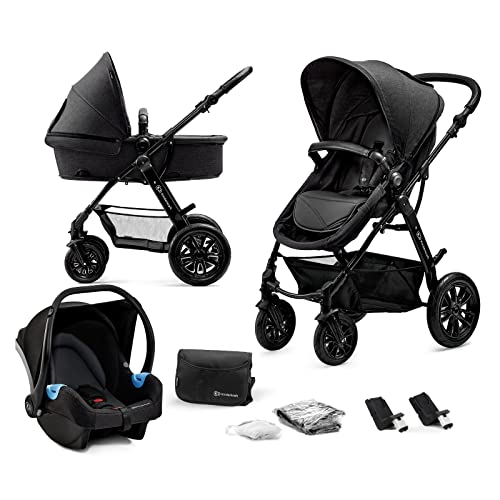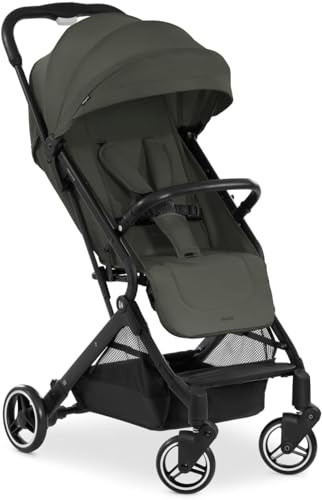9 Things Your Parents Taught You About Pushchairs From Birth
페이지 정보
작성자 Frederic 작성일 24-08-08 16:49 조회 10 댓글 0본문
 Choosing Pushchairs For Your Baby
Choosing Pushchairs For Your BabyA stroller, buggy, or pushchair is a form of transport for children who are young. Prams come with the capacity of a carry cot, bassinet or frame to attach a cot. Newborns should lie flat.
When a baby is able to exercise good head control and can sit up they can be seated in the pushchair with an incline that is either towards or away from you. Many pushchairs have useful features such as swivel wheels or enclosed carrycots. They can be used as 3 in 1 systems.
Rear-facing
There are a variety of choices to consider when choosing the right pushchair for your new baby. These include prams pushchairs, buggies, and strollers. The terms may sound interchangeable but there are significant differences between them. A pram is designed to lay flat, whereas a pushchair provides a sitting position. Some babies can be accommodated in both, whereas others need to use a carrycot until their necks and heads are strong enough to support them in a seated position.
The majority of experts agree that it's recommended to use a pushchair newborn that is positioned in front of the parent for infants up to a few months of age. Babies love to look at their parents' faces and enjoy the connection that this offers. Eye contact is essential for their emotional development, as they learn how to process the world around them. They also begin to develop language skills when they observe how their parents interact with them.
When babies are able to see their parents and feel secure and confident. They know that they can rely on their parents to protect their children and guide them through their surroundings. This early trust can contribute to an infant's confidence and well-being as they grow into toddlers and begin to explore the world on their own.
You can easily monitor your child while they are in the pushchair. It is easy to make sure that they are comfortable and happy, and that their hat isn't dangling over their eyes, or the wind isn't blowing on their face. Babies who are able to see their parents' faces are more likely to fall asleep because they are reassured by their familiar faces.
If you want to keep your child in a pushchair that is geared towards parents for as long as possible, there are a variety of options to pick from. Some are designed to change between forward-facing and front-facing, while others include an extended footmuff to keep your child warm in cold weather or a rain cover to keep the elements out. The Eezy Twist+2 pushchair is a good example of a multi-purpose pushchair. It can be transformed from a parent facing to a front-facing unit by pulling a lever. It can also be outfitted with a Cocoon S car seat, Cot S or carrycot to make the 4-in-1 Travel System.
Forward-facing
A pushchair with a forward-facing view allows children to explore and absorb the sights and sounds of their surroundings. The baby also has the ability to see his parents, which is crucial for social development. Around six months, depending on their developmental milestones and age, most babies are ready to transition from a newborn carrycot or pram to a pushchair facing forward. This is when they will have developed enough neck and head control to be able to safely sit in a forward-facing position.
Researchers have found that babies who face their parents in a pushchair facing towards the front are more likely to speak back and have a lower heart rate which suggests that they are less stressed. They are also more engaged in what's happening around them and their parents, which can help stimulate their minds and develop their language skills. Parents are more likely to speak to their children when they are in eye contact with them. This is calming and reassuring for them.
There are numerous advantages of using a front-facing pushchair from birth, including being able to use it for longer walks. You can take your child shopping or take them to other activities that require walking. A stroller or pushchair can also allow your child to participate in the same activities as their older siblings, which can help them build self-esteem and confidence.
You should choose a pushchair that has a wide range of accessories, including a blanket for the pram, a the footmuff and seat liner. When it's hot outside, a hood and parasol can help safeguard your baby. Choose a parasol which is SPF- or UV 50+ rating, and make sure it's designed to fit your pushchair and is easy to attach. Some brands offer a variety of accessories. Some come together with the pushchair while others are available separately.
Many pushchairs are convertible to doubles when you add an additional seat unit or carrycot. This is especially beneficial for families who will be expecting a second child soon after the first. Some of these models come with everything you need to make the switch and some have the option of a converter kit, which can be purchased separately.
All-terrain
If you live along a country road, enjoy walks in the woods or hiking often and require pushchairs that are designed for rough roads and rough terrain. All-terrain pushchairs are built to withstand any terrain, and come with features like suspensions to cushion bumpy rides for your child, so they don't shake up as much. The seat is designed to disperse the force of the bumpy terrain over your child's neck and head.
Most strollers for all terrains are three-wheelers, with the front wheel that can be swiveled and locked in place to give maximum maneuverability. This is vital when you're on rough surfaces. They also have larger tires than your typical pushchair, which means that they can handle rougher paths and have a more comfortable ride for your child.
Another aspect to take into consideration when shopping for an all-terrain pushchair is if the wheels are filled with air or foam. Air-filled tyres provide a smoother ride over rough ground however they could also puncture more easily if you hit something sharp. Foam-filled tyres last longer and less likely to puncture, and this is the best option for a pushchair that is all-terrain.
A lot of all-terrain Pushchairs from birth convert into double mode to accommodate a growing family and some can be used as a travel system with car seat adaptors, making them great purchase for parents who are expecting. Some models, like the Out 'n' About Nipper, are newborn-suitable thanks to their near-flat seats, and the fact that you can use a carrycot with them (although it isn't suitable for sleeping at night).
The Nipper also comes with a wide range of accessories for a pushchair that include a raincover as well as a footmuff. It's easy to store since it folds up compactly in one hand and stands on its own when folded. It has an adjustable lockable wheel that can rotate 360 degrees and tyres with foam-filled, never-flat tires.
Weight
Selecting the right pushchair is a major choice that will affect the way you take your baby. The best model will allow your child to grow and develop in a safe and comfortable manner, while giving you the chance to take advantage of all of the family adventures that are yet to come. It's an investment of a large amount, so be sure to check to make sure you select the model that will suit your lifestyle and budget.
The first step is to understand the distinction between a pushchair, pram and buggy, as well as the distinctions between a travel system and a single pushchair. This guide will help parents understand the jargon and decide which is best for their baby.
A pram, as its name suggests, is made for newborns and babies from six months to six months old. It allows your baby's back to develop properly, by allowing them sleep in a flat position. Some models include bassinets which can be used in the first few months to provide your baby with an environment that is safe and comfortable for your baby.
However, you should be aware that not all pushchairs claim that they can lie flat actually can. Be wary of claims from manufacturers that their pushchairs can recline flat. Always look over the fine print to discover what it actually means. Some pushchairs can only offer a small amount of recline, which is far better than a fully-reclining seat.
Once your baby is old enough to sit without assistance, it's time to move them into the pushchair seat. This is usually at around three or four months, however some infants will begin sitting up much earlier. It's best to buy a pushchair that is able to transform from a carrycot to a seat. This will give you the flexibility you need and ensure your baby's safety until they're ready to move on to the next stage.
 A light pushchair with a single pedal brake is usually favored by parents, particularly those who prefer to to chat with their children or use their hands to carry shopping bags. Our MFM home tester Jessica gave this pushchair the thumbs up, stating that "it performs flawlessly, with a lovely, smooth ride, and the one-handed fold is amazing". The lightweight model comes with TruRide tyres, which are durable, puncture-resistant and provide high performance.
A light pushchair with a single pedal brake is usually favored by parents, particularly those who prefer to to chat with their children or use their hands to carry shopping bags. Our MFM home tester Jessica gave this pushchair the thumbs up, stating that "it performs flawlessly, with a lovely, smooth ride, and the one-handed fold is amazing". The lightweight model comes with TruRide tyres, which are durable, puncture-resistant and provide high performance.- 이전글 What Makes Piwik Better Than Google Analytics?
- 다음글 Find out how to Handle Every 足底按摩 Challenge With Ease Using The following pointers
댓글목록 0
등록된 댓글이 없습니다.

